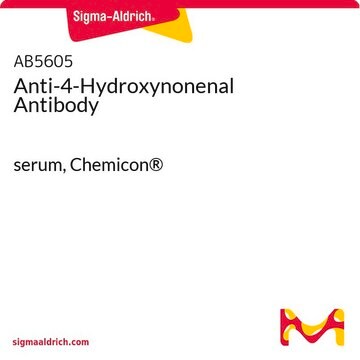07-214
Anti-dimethyl-Histone H3 (Arg17) Antibody
Upstate®, from rabbit
Sinonimo/i:
H3R17me2, Histone H3 (di methyl R17), H3 histone family, member T, histone 3, H3, histone cluster 3, H3
About This Item
Prodotti consigliati
Origine biologica
rabbit
Livello qualitativo
Forma dell’anticorpo
affinity purified immunoglobulin
Tipo di anticorpo
primary antibodies
Clone
polyclonal
Purificato mediante
affinity chromatography
Reattività contro le specie
human, vertebrates
Produttore/marchio commerciale
Upstate®
tecniche
ELISA: suitable
immunocytochemistry: suitable
inhibition assay: suitable (peptide)
western blot: suitable
Isotipo
IgG
N° accesso NCBI
N° accesso UniProt
Condizioni di spedizione
dry ice
modifica post-traduzionali bersaglio
trimethylation (Arg17)
Informazioni sul gene
human ... H3C1(8350)
Descrizione generale
Specificità
Immunogeno
Applicazioni
ELISA:
A previous lot of this antibody was used in ELISA. At dilutions greater than 1:2000 this antibody is specific for peptides containing dimethylated Arg17. No cross-reactivity detected with a peptide containing dimethylated Arg26.
Immunocytochemistry:
An independent laboratory showed positive immunostaining for CARM-1 specific methylation of Histone H3 in 3134 cells.
Epigenetics & Nuclear Function
Histones
Qualità
Western Blotting Analysis: A 1:7,500 dilution of this antibody detected dimethyl-Histone H3 (Arg17) in Histone H3 treated with Histone-arginine methyltransferase (CARM1).
Descrizione del bersaglio
Stato fisico
Stoccaggio e stabilità
Risultati analitici
Calf thymus histone preparation, Acid HeLa cell extract.
Altre note
Note legali
Esclusione di responsabilità
Not finding the right product?
Try our Motore di ricerca dei prodotti.
Codice della classe di stoccaggio
12 - Non Combustible Liquids
Classe di pericolosità dell'acqua (WGK)
WGK 1
Punto d’infiammabilità (°F)
Not applicable
Punto d’infiammabilità (°C)
Not applicable
Certificati d'analisi (COA)
Cerca il Certificati d'analisi (COA) digitando il numero di lotto/batch corrispondente. I numeri di lotto o di batch sono stampati sull'etichetta dei prodotti dopo la parola ‘Lotto’ o ‘Batch’.
Possiedi già questo prodotto?
I documenti relativi ai prodotti acquistati recentemente sono disponibili nell’Archivio dei documenti.
Il team dei nostri ricercatori vanta grande esperienza in tutte le aree della ricerca quali Life Science, scienza dei materiali, sintesi chimica, cromatografia, discipline analitiche, ecc..
Contatta l'Assistenza Tecnica.







